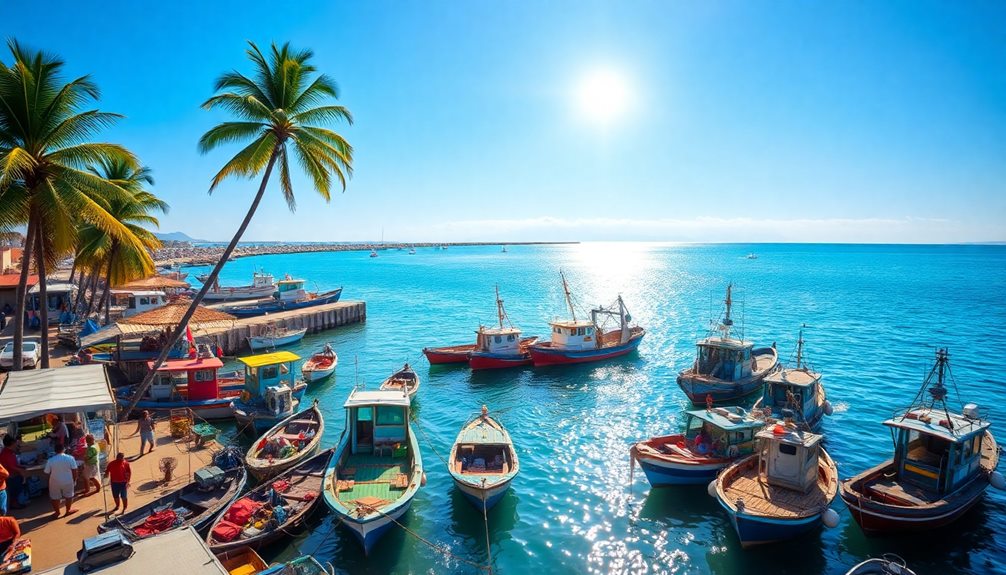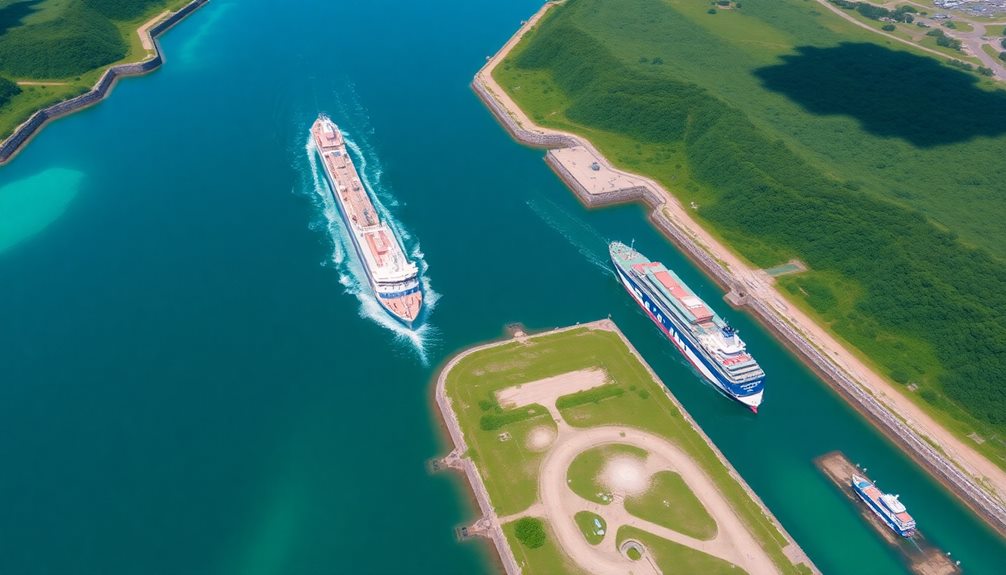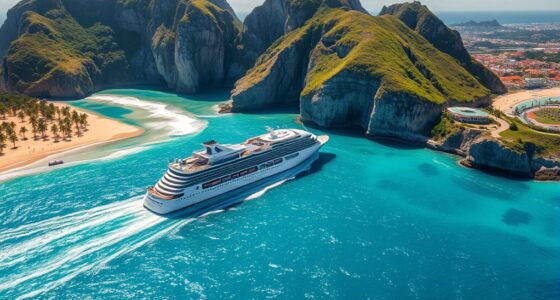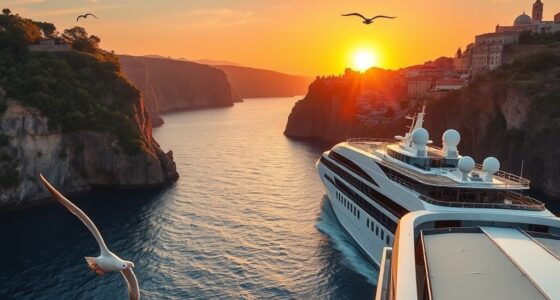Cruising the Mexican Riviera invites you to explore stunning ports like Cabo San Lucas, Puerto Vallarta, and Mazatlán. You can enjoy whale watching, vibrant local culture, and thrilling water sports. Each port offers unique activities, from jungle excursions in Puerto Vallarta to deep-sea fishing in Mazatlán. The best time to visit is during the dry months from November to April, when you'll find ideal outdoor conditions. Don't forget to pack layered clothing and essentials like sunscreen. Stay safe by sticking to tourist zones and using reliable transport options. Keep reading to uncover more about your trip planning.
Key Takeaways
- Cabo San Lucas offers thrilling whale watching and a variety of water sports from December to April, attracting nature enthusiasts.
- Puerto Vallarta features charming cobblestone streets, ideal for exploring local culture and jungle excursions.
- Mazatlán is known for deep-sea fishing, historical sites, and a scenic seaside promenade, perfect for leisure and adventure.
- Ensenada boasts unique attractions like the La Bufadora marine geyser and wine tours in the picturesque Valle de Guadalupe.
- La Paz provides unforgettable experiences such as swimming with whale sharks and visiting the stunning Los Islotes.
Reasons to Cruise the Mexican Riviera
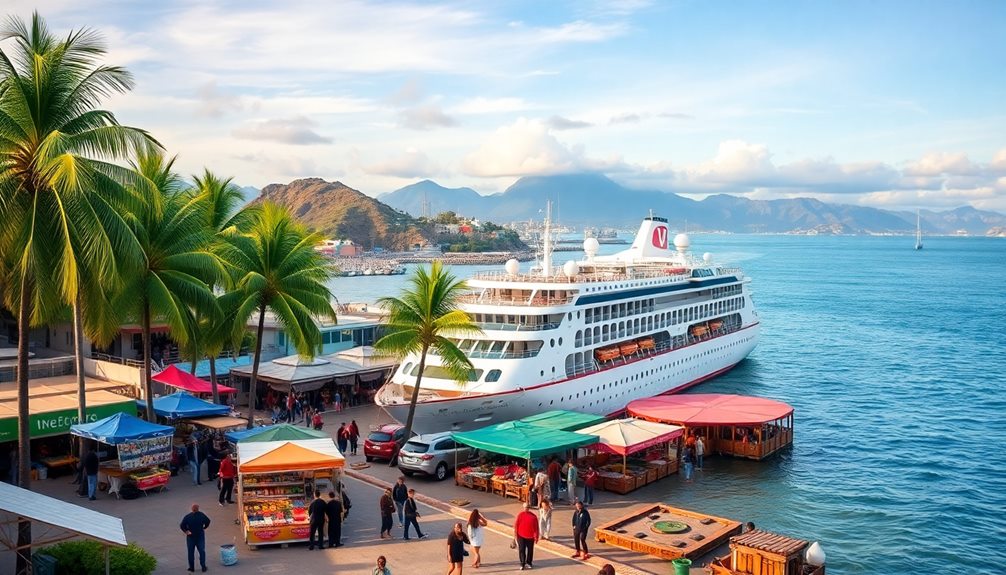
Cruising the Mexican Riviera is an adventure that promises stunning coastal scenery and unforgettable experiences. This unique region offers a wealth of opportunities that set it apart from Caribbean and European cruises.
Picture yourself in Cabo San Lucas, where outdoor activities abound, especially during whale watching season from December to April. You'll have a front-row seat to nature's spectacular show as these magnificent creatures breach the surface.
Then, head to Puerto Vallarta, where vibrant local culture intertwines with breathtaking beaches. Immerse yourself in crystal-clear waters for snorkeling adventures, exploring vibrant coral reefs teeming with marine life.
The Mexican Riviera isn't just about the sea; it's a living tapestry of cultural richness. Experience local festivals, savor delicious cuisine, and visit museums that showcase the region's history.
For those seeking thrills, Mazatlán offers excellent sport fishing and rich historical sites. With over 340 sunny days a year, you'll find ideal conditions for all these outdoor activities.
Each port of call brings its unique flavor, making a cruise through the Mexican Riviera an enticing choice for adventure seekers and culture lovers alike.
Key Ports of Call
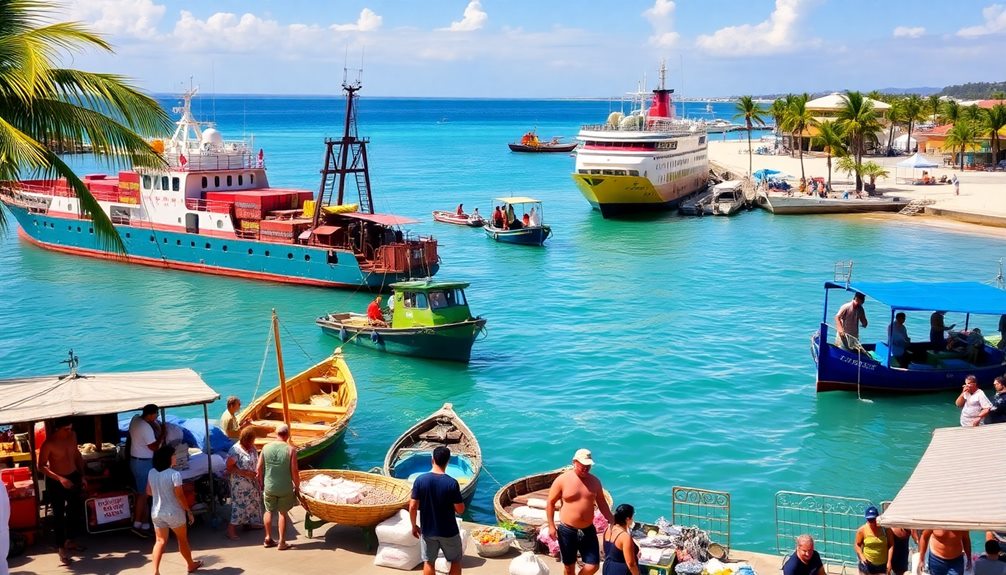
As you plan your journey along the Mexican Riviera, you'll discover a variety of enchanting ports that each offer unique experiences. Here's a quick look at some key ports of call:
| Port | Highlights |
|---|---|
| Cabo San Lucas | Whale watching from December to April; water sports galore. |
| Puerto Vallarta | Vibrant local culture and charming cobblestone streets; perfect for jungle excursions. |
| Mazatlán | Known for deep-sea fishing and rich historical sites; stroll the seaside promenade. |
In Ensenada, close to the California border, you can explore La Bufadora, a stunning marine geyser, and indulge in wine tours at nearby Valle de Guadalupe. La Paz is a must-visit for its unique experiences, like swimming with whale sharks and visiting Los Islotes to see playful sea lions. Each port boasts beautiful scenery and a chance to immerse yourself in the local culture. Whether you're seeking adventure or relaxation, the Mexican Riviera's ports have something special just waiting for you!
Best Time to Visit
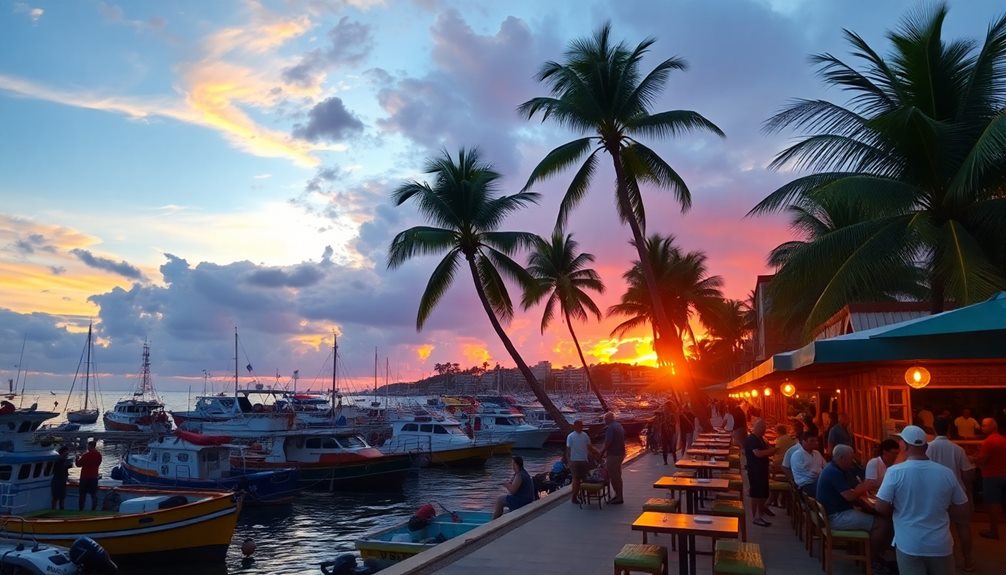
Timing your visit to the Mexican Riviera can greatly enhance your experience. If you're looking to enjoy the vibrant culture and stunning scenery without the crowds, consider traveling during the peak cruising months of September, October, May, or June. These months often offer better deals and a more relaxed atmosphere.
For those who love outdoor activities, the driest weather from November to April is ideal, with average temperatures ranging from the 70s to 80s.
If you're heading to Cabo San Lucas, be prepared for summer temperatures in the 80s, but winter can bring cooler weather.
If you're a budget-conscious traveler, off-peak months can provide quieter experiences and potential savings on accommodations and excursions.
Plus, if you're interested in wildlife, plan your visit between January and March to witness the spectacular whale migration near Cabo.
Packing Essentials

When packing for your trip to the Mexican Riviera, it's important to contemplate the region's diverse climate and activities. Start with layered clothing to handle temperature variations, as evenings can be cooler while days may call for shorts and t-shirts.
Comfortable footwear is a must for outdoor activities like hiking and zip lining, especially in spots like Ensenada and Mazatlán.
Don't forget to include sunscreen, hats, and cover-ups to protect yourself during beach excursions and water activities, particularly in sunny Cabo San Lucas.
If you're planning on whale watching, binoculars can enhance your experience, allowing you to spot these majestic creatures from afar.
Additionally, having cash in Mexican Pesos on hand is wise, as it can help you get better prices than using credit cards at local vendors.
Safety Tips for Travelers
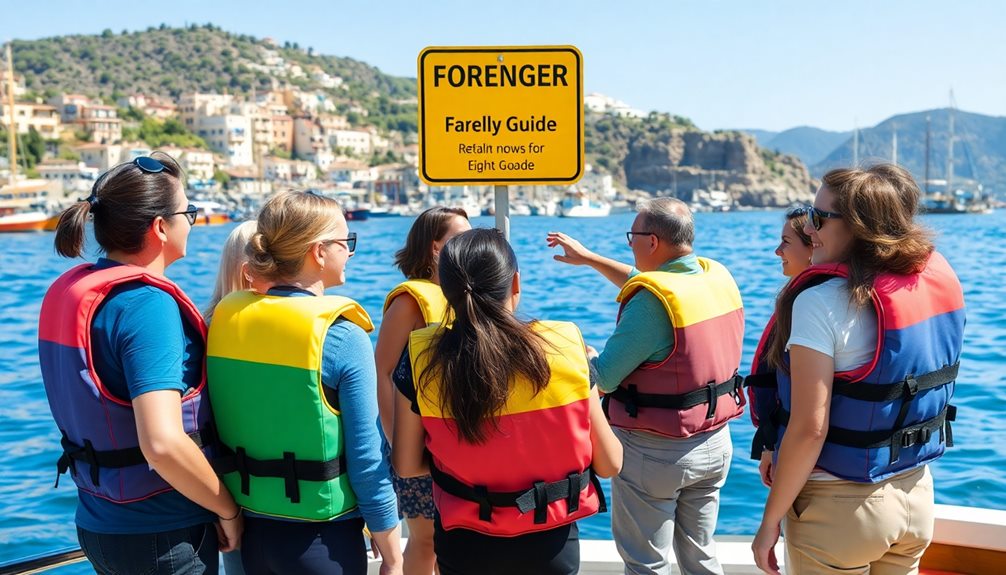
Traveling to the Mexican Riviera can be a fantastic experience, especially with the increased police presence in tourist areas that has made many travelers feel safer.
Crime rates in popular spots like Cabo San Lucas are lower than many perceive, providing a sense of security for tourists.
To enhance your personal safety and guarantee positive experiences, here are some essential safety tips:
- Stay in tourist zones: Stick to well-populated areas where police presence is more noticeable.
- Avoid displaying valuables: Keep expensive items out of sight to reduce the risk of theft.
- Familiarize yourself with local customs: Understanding local laws and etiquette can prevent misunderstandings.
- Use reliable transportation: Opt for official taxis or established tour services to navigate safely between destinations.
Conclusion
As you set sail for the Mexican Riviera, let the vibrant colors and warm breezes sweep you off your feet. With each port, you'll uncover treasures waiting to be explored, from sun-kissed beaches to rich cultures. Don't forget your essentials and stay savvy about safety, so you can fully immerse yourself in this coastal paradise. So grab your shades, feel the rhythm of the waves, and get ready for an unforgettable adventure on the high seas!

